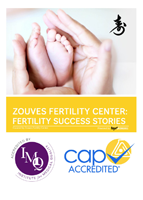The single most serious complication an IVF patient faces – apart from a multiple pregnancy – is the risk of becoming severely ill after being stimulated with injectable fertility medications. This complication is referred to as Ovarian Hyperstimulation Syndrome. OHSS occurs in 1-2% of patients, causing hemoconcentration, weight gain, severe abdominal distension, ovarian enlargement and in extreme cases, renal failure or even maternal death.
What causes OHSS?
The administration of the trigger shot called human Chorionic Gonadotropin (hCG), used for maturing the eggs is the precipitating event that sets symptoms of OHSS in motion. Estrogen and progesterone levels rise precipitously and this contributes to the development of OHSS.
The hCG also stimulates the release of Vascular Endothelial Growth Factor (VEGF) which makes blood vessels more permeable and in turn causes rapid accumulation of fluid within the ovary, the peritoneal cavity and other spaces in the body.
Who is at risk for OHSS?
When more than 20 follicles are developing and the estradiol level rises above 4000 pg/ml, a patient is at moderate risk for developing OHSS. With more than 30 follicles and estradiol greater than 6000 pg/ml, there is an 80% chance of developing severe OHSS if preventive measures are not instituted.
Patients with menstrual cycles longer than 30 days, irregular ovulation and menstruation, the production of more than 20 follicles, are all at higher risk.
How to treat OHSS:
Agonist or Lupron Trigger
- Given that the administration of hCG appears to be the precipitating event for developing OHSS, an alternative to hCG induced ovulation triggering (such as GnRH agonist or Lupron) can avoid the risk of OHSS.
- The Lupron trigger induces the release of LH and FSH from the pituitary which then effectively induces oocyte maturation for either retrieval or ovulation induction.
- The major limitation of Lupron to trigger oocyte maturation is that it may be ineffective in women with a low gonadotropin reserve or after pituitary down-regulation.
Coasting and Fluid Restriction
- Regardless of the protocol used for stimulation, applying fluid restriction of 1 L per day of an electrolyte containing solution can dramatically lessen the symptoms of abdominal distention and discomfort that go with OHSS.
- The solutions recommended are Gatorade or Propel, the latter having less sugar but the same electrolyte combination. It is best to start the fluid restriction before administration of the hCG and to continue until menstruation or in the case of pregnancy until the symptoms of OHSS subside.
- Due to the hemoconcentration that results from the OHSS as well as the fluid restriction, we advise adding 81 mg of daily aspirin after the egg retrieval and in certain cases to add an anticoagulant prophylaxis in the form of Lovenox 40 mg daily.
OHSS is preventable by knowing who is at risk and applying the Antagonist Protocol with a Lupron Trigger.






